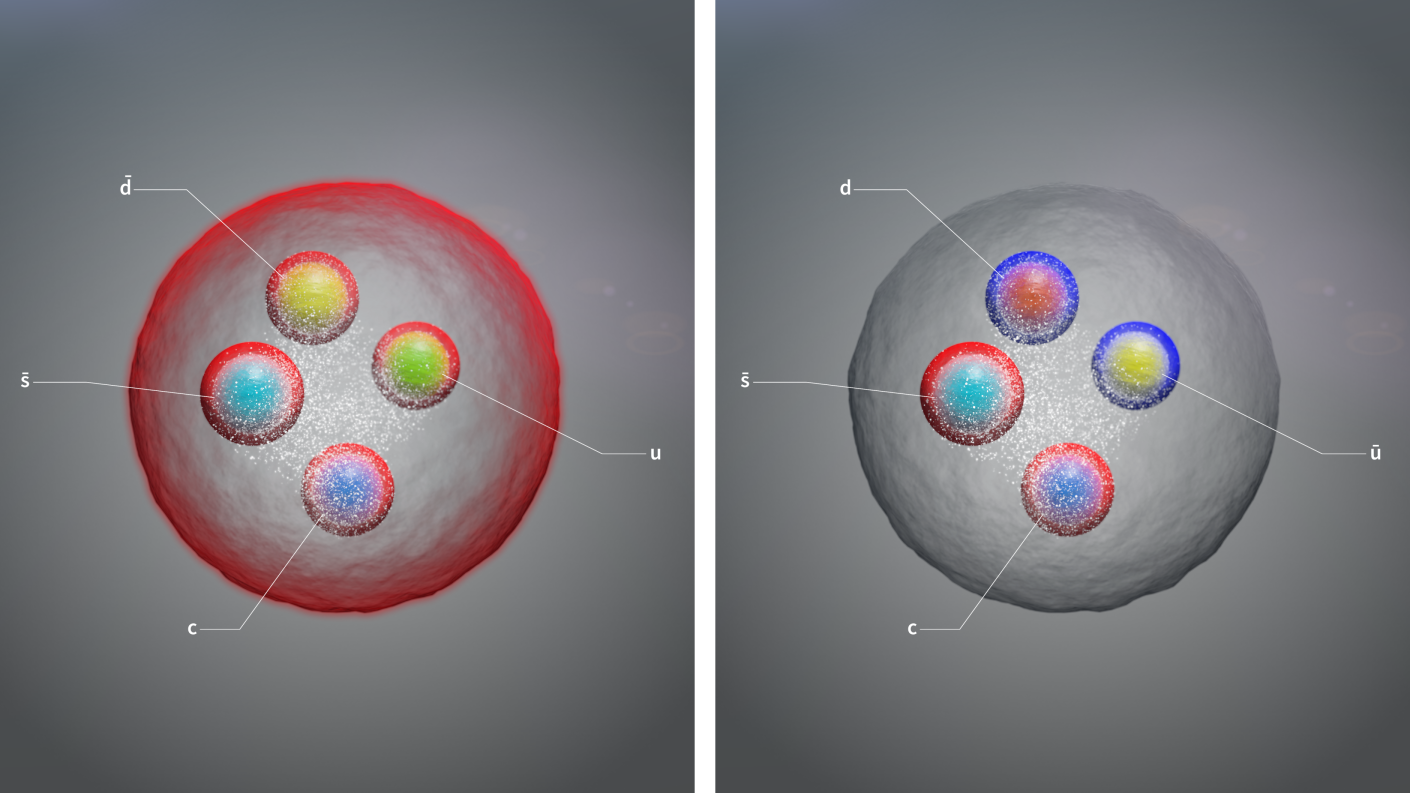Physicists at CERN’s Large Hadron Collider announced today the discovery of three exotic particles that may help reveal how quarks bind together.
One particle is a pentaquark (a hadron made up of five quarks) and the other two are tetraquarks. They were found by the LHCb Collaboration at CERN, which uses a 5,080 T detector on a portion of the Large Hadron Collider to investigate differences between matter and antimatter.
Last year, the collaboration found the first double-charm tetraquark, the longest-lived exotic matter particle yet found. The newly discovered particles add to the collaboration’s running list of exotic particles.
“The more analyses we perform, the more kinds of exotic hadrons we find,” said Niels Tuning, an LHCb physics coordinator, in a CERN release. “We’re witnessing a period of discovery similar to the 1950s, when a ‘particle zoo’ of hadrons started being discovered and ultimately led to the quark model of conventional hadrons in the 1960s. We’re creating ‘particle zoo 2.0’.”
Hadrons are strongly interacting subatomic particles made up of quarks and antiquarks. Your familiar protons and neutrons are both hadrons; they are each made up of three quarks.
Quarks come in six flavours (up, down, charm, strange, top and bottom), which can combine in different ways to make up unique particles.
For example, the recently discovered pentaquark is made of strange, up, down and charm quarks, as well as a charm antiquark. It’s the first known pentaquark to contain a strange quark. The two new tetraquarks are a pair: one is doubly charged, and the other is its neutral partner.

“Finding new kinds of tetraquarks and pentaquarks and measuring their properties will help theorists develop a unified model of exotic hadrons, the exact nature of which is largely unknown,” LHCb spokesperson Chris Parkes said in the CERN release. “It will also help to better understand conventional hadrons.”
Ten years ago yesterday, the Higgs boson’s existence was confirmed, and physicists at the LHC continue to find new particles. Sixty-six hadrons have so far been discovered at the collider, and the LHCb has been responsible for 59 of them. The LHC’s third run began today, and physicists expect that the very energetic collisions will offer even better data to unpack the hidden underpinnings of our universe.
And there’s plenty of useful data to be gleaned besides the new particles that come out of the collisions. “The search for new particles is not even half of everything we do at the LHC,” Freya Blekman, a particle physicist at the University of Hamburg and a contributor to the CMS and FCC-ee collaborations, told Gizmodo in a video call last week. “We also do a lot of studies as far as how matter sticks together and how these well-known nuclear forces work on a much more detailed level.”
With the high-luminosity Large Hadron Collider on the horizon, the future of particle physics is as bright as ever.
More: 10 Years After the Higgs Boson, What’s the Next Big Thing for Physics?
